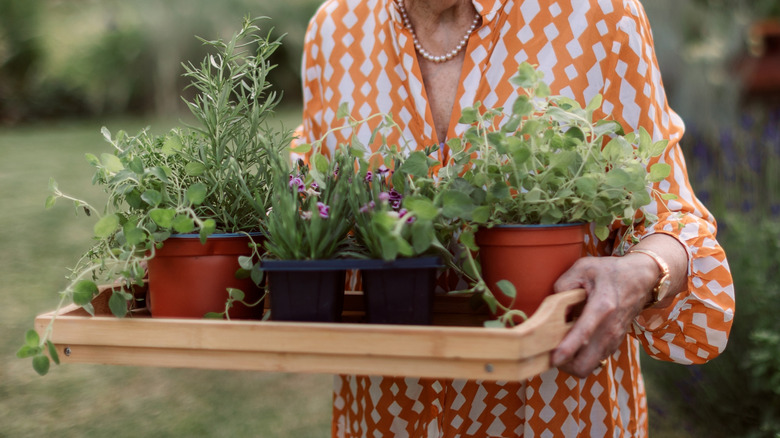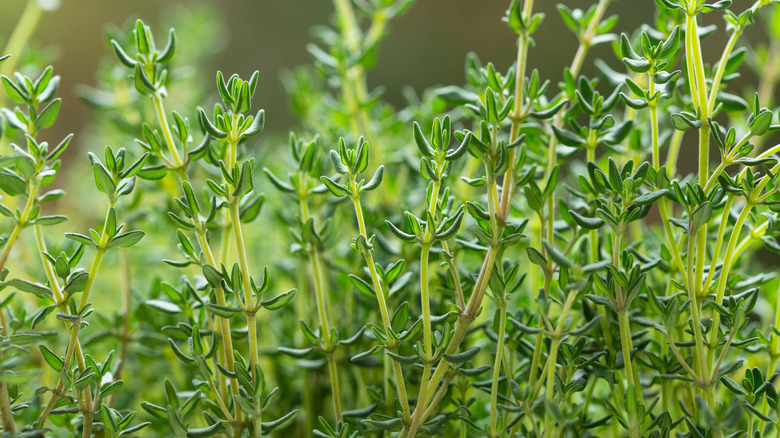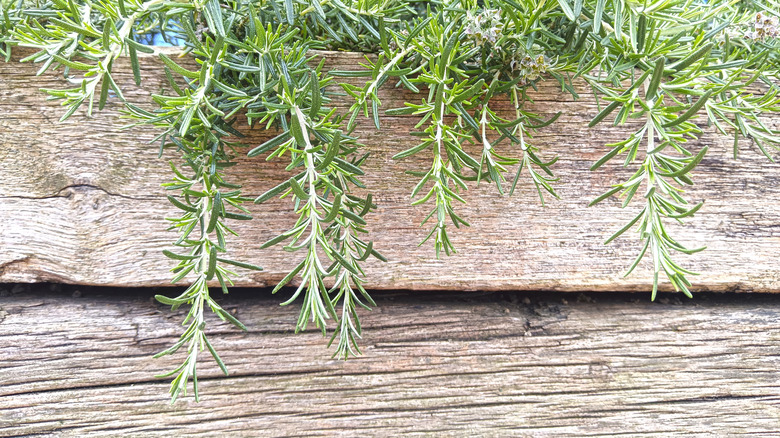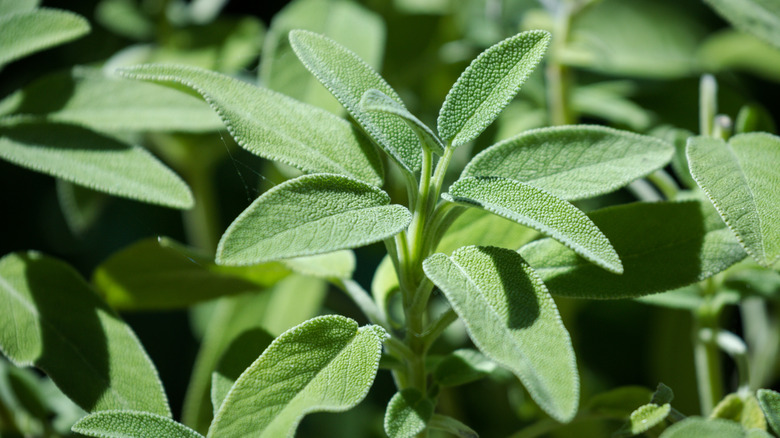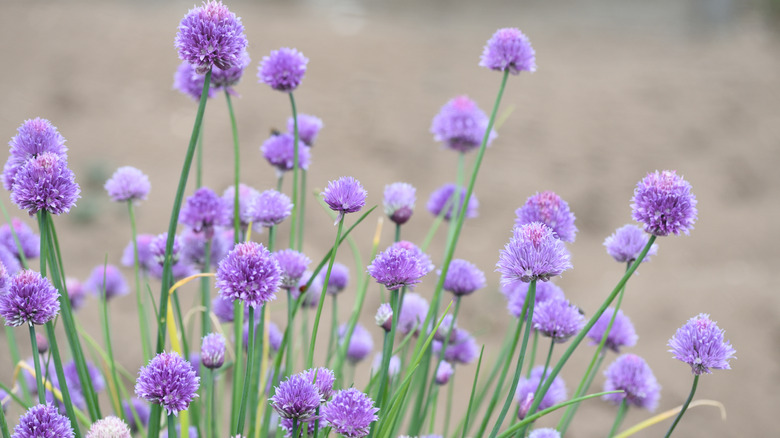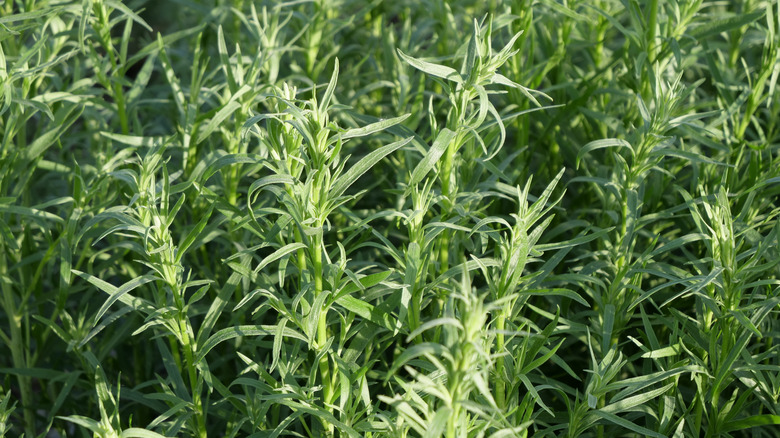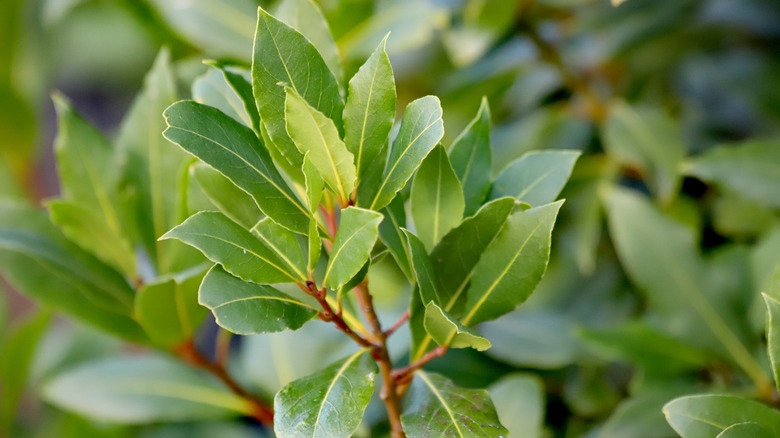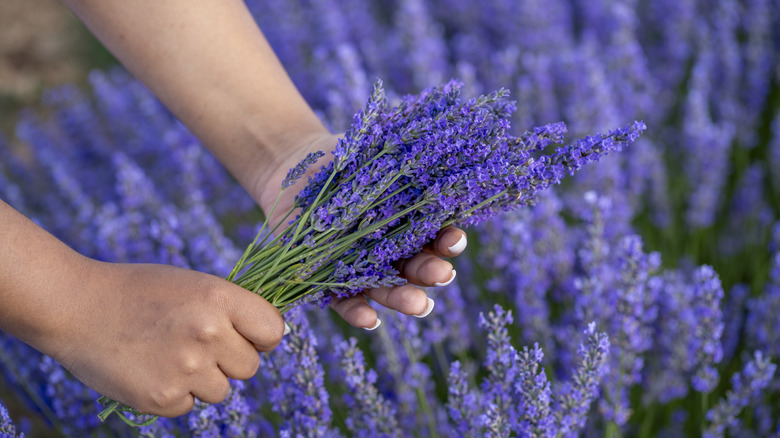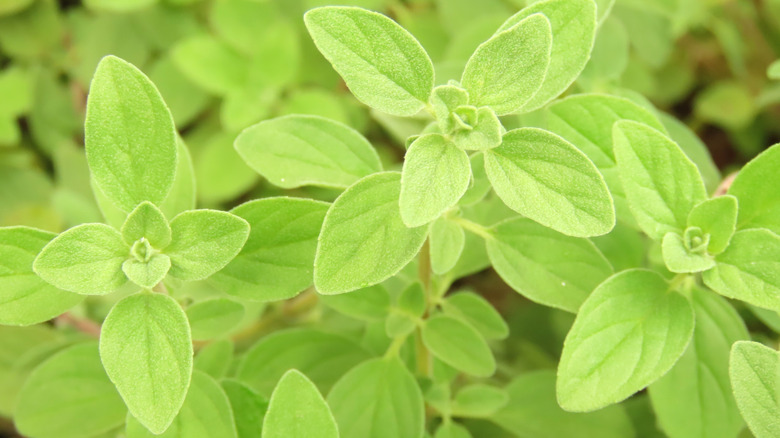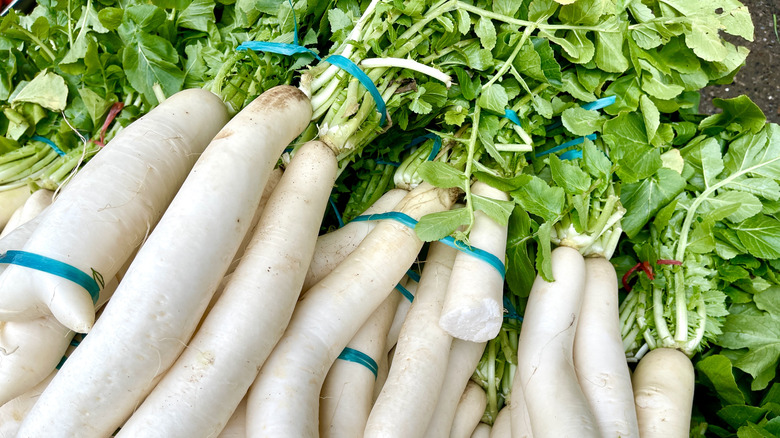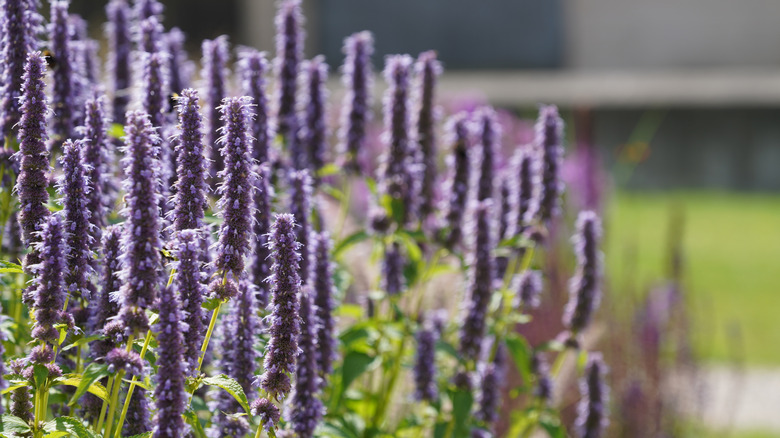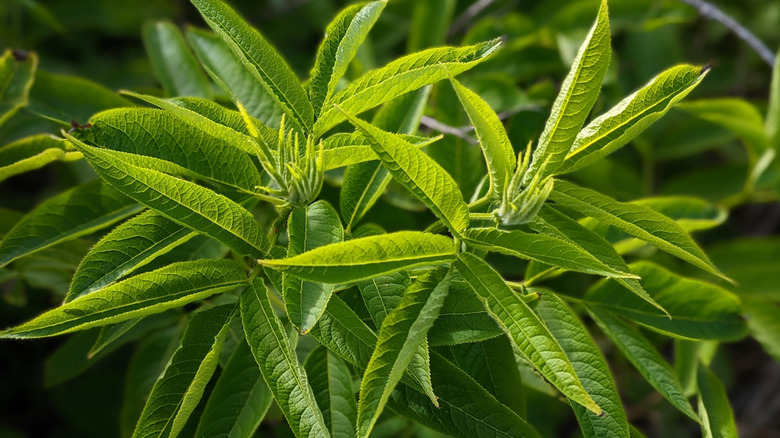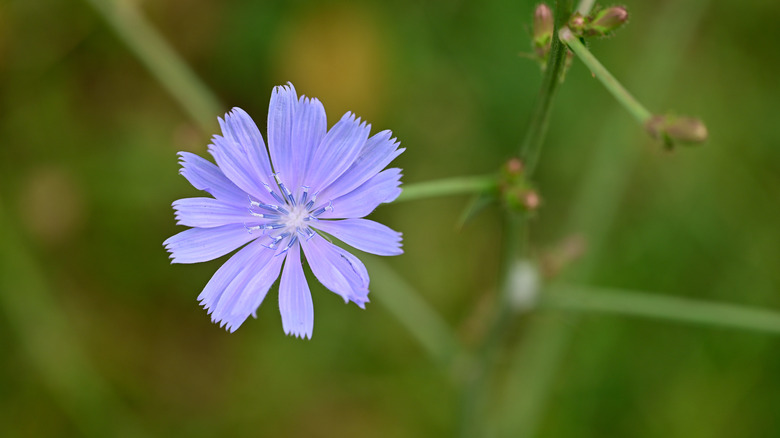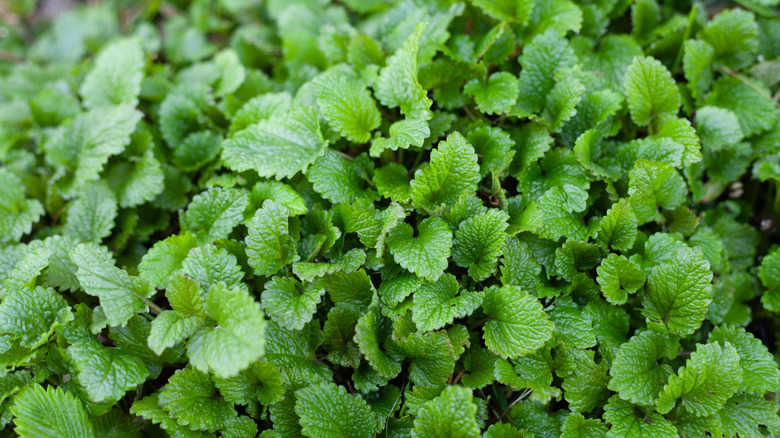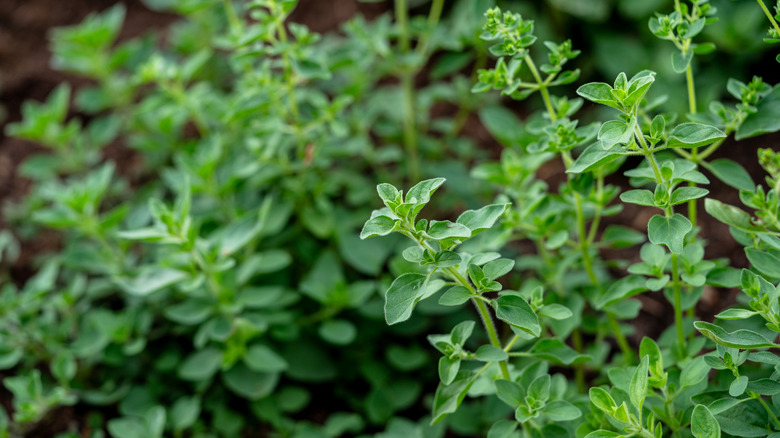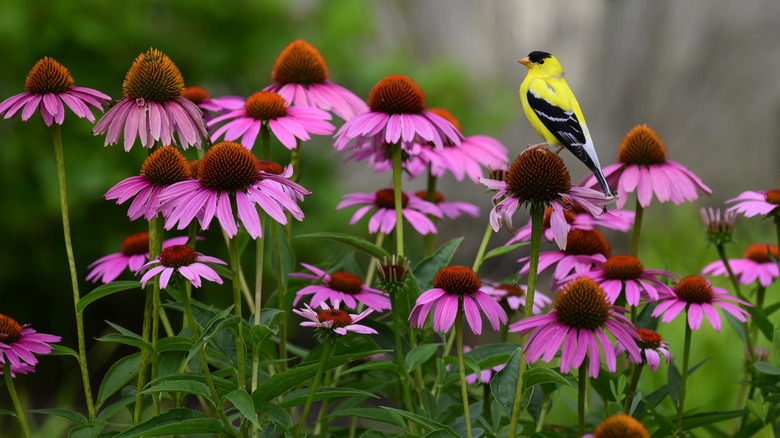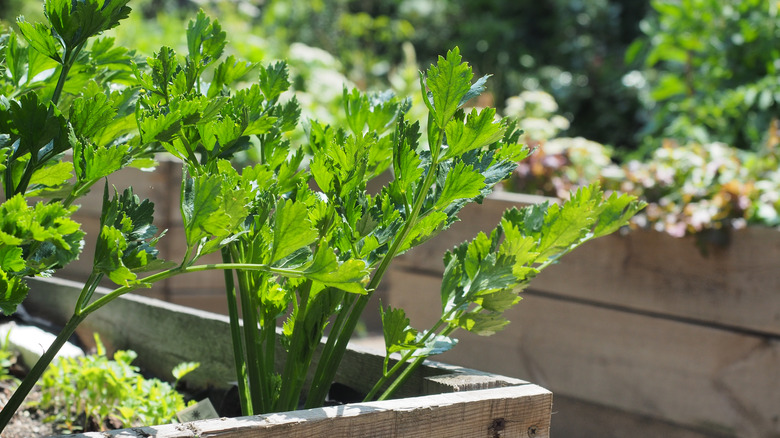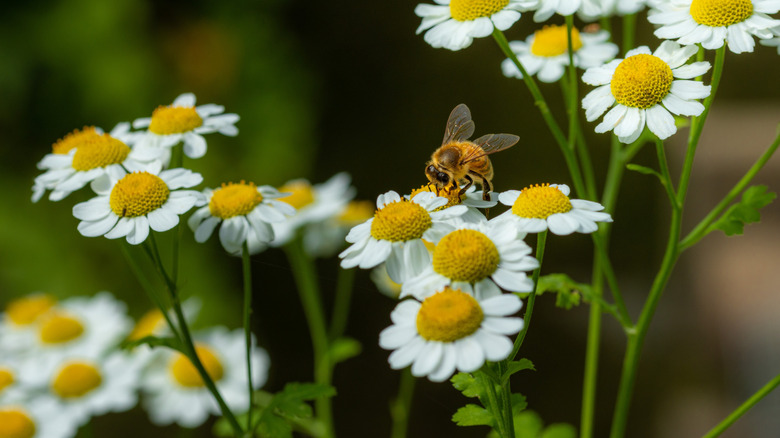20 Perennial Herbs You Can Plant Once And Enjoy Year After Year
With the cost of groceries seeming to go up every year, why not save money by growing some easy, no-fuss herbs in your garden beds? Perennial herbs can be a great way to plant once and then sit back and enjoy returning plants year after year. Even though herbaceous perennials will seem to die in the winter, their roots live on, and they sprout again come spring. Not sure which herbs are perennials? Start by thinking of that old Simon and Garfunkel song, "Scarborough Fair." In it, they sing about "sage, rosemary, and thyme" — all favorite perennials. (They mention parsley, too, but it's technically a biennial.)
Rosemary and thyme can be great to season your poultry, and other perennial herbs like oregano will perk up your favorite marinara sauce or pizza recipe. And fragrant perennial herbs like lavender can be a wonderful addition to potpourri satchels that can be brighten up closets, dresser drawers, and bathrooms. Some, like lavender and oregano, are even drought resistant.
Perennial herbs mean a constant and fresh source of herbs for your favorite recipes, but they can also be good for the environment, attracting pollinators like bees and butterflies to your garden. These plants also make excellent companions, too. Herb gardens can be easy to grow, as you can plant them in containers or the ground, and they're fairly easy to maintain — even for gardeners brand new to working in the soil. We've got a list of 20 fantastic perennial herbs to plant.
Give your herb garden a little more thyme
Thyme, a wonderful evergreen perennial, is a fantastic addition to your herb garden. It prefers rocky soil that's fairly neutral to slightly alkaline pH. Thyme will rarely grow bigger than a foot or so. Keep in mind that you shouldn't cut the plant shorter than 5 inches when you're harvesting some for your favorite recipes if you want to keep your thyme healthy. Deer don't much care for thyme, so they'll likely leave it alone. Thyme may also give your garden pretty white, pink, or purple flowers to enjoy as well.
Add rosemary for greenery all year round
Rosemary is an evergreen perennial that's a fantastic staple to any herb garden. It'll thrive in warmer climates, typically USDA Hardiness Zones 8 and above. It's largely considered a tender perennial for areas with colder winters, so if you live in zones where winter temps regular drop below 5 degrees, then you'll want to think about planting rosemary in containers and bringing it inside for the cold months. The best temperature to grow herbs really depends on the kind, so do your research before you plant.
Have chamomile blooms for tea
What's better than a relaxing cup of herbal chamomile tea before bedtime? Maybe making tea fresh from the herb in your garden! Known for its white flowers with its yellow centers, chamomile is also called the barnyard daisy. It doesn't like its summers too hot, and it does well in partial shade. It's best suited for zones 4 through 9. Chamomile can be easily grown from seed, and really prefers well-drained soil and even some dry conditions, as long as it's grown in sun or partial shade.
Grow sage for an easy perennial
Add the woody perennial sage to your herb garden and you won't be sorry. Sage will thrive in zones 8 through 11 and likes a slightly alkaline soil with pH levels between 6 and 7. Sage needs to be cut regularly, so keep those pruning sheers handy. Sage might be shy to flower the first year after planting, but it'll mature over time and will then give you pretty purple or bluish blooms that are likely to attract bees, butterflies, and other pollinators to your garden.
Chives are easy to grow and cold resistant
People have grown chives for thousands of years, loving their faint onion-like flavor in dishes aplenty. It's hardy all the way up to zone 3, and it sprouts pretty purple flowers in the summer. Fun fact: you can even eat chive flowers. The flowering blooms on these perennial herbs will also attract pollinators to your garden, and will keep coming back with little fuss each year as long as they get good sunlight.
French tarragon earns a royal title
French tarragon is a must-have herb in many dishes, even earning the title of "king of herbs" in France. It's best planted in zones 5 through 8, and prefers its soil dry with plenty of sun. It needs dry soil that's well drained, and on the pH scale, ranks neutral to slightly acidic. It's best planted in spring after the threat of frost has passed. Make sure it has plenty of space, giving it about 2 feet between each sprout. You'll likely need to divide tarragon every few years.
Bay leaves prefer warmer climates
Bay leaves, technically from a tree or shrub, are a staple in many recipes. Growing your own in an herb garden is easy and fun. Sweet bay laurel trees are a fantastic addition to your perennial herb garden. They are slow-growing small trees that thrive in partial to full sun, but don't tolerate extreme cold. If you live in zone 8b or colder, plant your bay in a container and bring it inside before the first frost. Bay leaves can be decorative, too. If trimmed just so, its evergreen leaves can make a lovely topiary.
Plant fragrant lavender and it'll keep coming back
Lavender is a hardy perennial, which can be a fragrant and a pretty part of any perennial herb garden. The plant won't thrive in wet soil as it can quickly can lead to root rot, so if drainage is a problem, you might want to plant it in a raised flower bed. Lavender is drought resistant, and can be pretty resistant to heat. Whatever you do — don't overwater. Let the first few inches of soil dry before watering.
Add oregano and your pizzas will thank you
Many dishes aren't quite complete without oregano. Luckily, growing this resilient perennial in your garden is easy. Oregano has more than 45 species, though Italian oregano (Origanum vulgare subsp. hirtum) might be one of the most popular for its delicious flavor. Oregano grows even in poor soil, and does well in zones 5 to 9. It doesn't like acidic conditions or a whole lot of humidity. Oregano loves sun, but also does well with partial shade.
Add spice to your herb garden with horseradish
Horseradish (Armoracia rusticana) is technically a root vegetable that has been used for thousands of years as a condiment to spice up meat and other dishes, and may also help with digestion. It's a hardy perennial, and its roots are what's most often used – so horseradish is best planted in a row in tilled soil about 8 or 10 inches deep in zones 2 to 9. Horseradish grows most in the late summer, so save any harvesting of roots until late fall.
Plant anise hyssop to flavor tea or attract hummingbirds
Attract hummingbirds to your garden with this purple flower they can't resist — the anise hyssop (Agastache foeniculum). This lavender-flowering perennial that attracts pollinators to your garden is hardy in zones 4 to 8 and loves full or partial sun. It thrives in soil with great drainage. Keep in mind that anise hyssop seeds itself, so it will grow and spread on its own. While you might think this flower is part of the anise (Pimpinella anisum) or hyssop (Hyssopus officinalis) family, you'd be wrong. It's actually a kind of mint.
Add lemon verbena to the garden
Lemon verbena (Aloysia citriodora), native to South America, is sought after for its citrus flavor. It can be used in tea or any number of desserts for that splash of tart lemon flavor. It might be one of the tallest herbs in your garden, as well, as plants can grow around 8 feet tall in your flower bed — though it will only reach about 4 feet tall if you plant it in a container. Lemon verbena is sensitive to frost, so if you have harsh winters, consider keeping it in a pot.
Sweeten your herb garden with stevia
Sweetleaf or stevia (Stevia rebaudiana) is a natural sweetener and a tender perennial herb that can add a sweet touch to your herb garden as long as you live in warmer climates, like zones 10 through 11. Stevia needs a lot of sun to grow. Make sure to fertilize it regularly since it craves fertile soil to grow its sweet leaves. You can use the leaves as a no-calories substitute for cane sugar, but keep in mind that stevia is 200 to 300 times sweeter than white table sugar.
Plant chicory and make your own southern coffee
Chicory (Cichorium intybus) is a pretty perennial herb, though some classify it as a common roadside weed. Chicory is known for its bitter-flavored roots that flavor chicory coffee, a practice that began hundreds of years ago in France but became famous as a New Orleans staple. Chicory is related to the dandelion, so be aware that it easily spreads to lawns or other parts of your garden. Despite being a New Orleans favorite, it doesn't like heat and humidity and does better in cooler climates.
Lemon balm (or lime balm) is a tart perennial
Lemon balm and its cousin lime balm will add a citrus twist to any tea or lemonade, or even lip balm or lotion. The herb is also known for potential antiviral and antibacterial properties. Lemon balm needs well-drained soil. If growing from seed, make sure to stratify seeds for about two weeks first for best results. You can plant lemon balm in either the spring or fall, but know that lemon balm self-seeds, so you might want to plant in a pot on a patio.
Salad burnet will bring a cool cucumber-like taste
Salad burnet (Poterium sanguisorba) is a leafy herb that sprouts magenta flowers likely to attract butterflies to your yard. The flowers were so pretty that even the Tudors of England planted them as decorative additions to their royal gardens. Salad burnet is hardy and versatile, and grows in zones 4 to 8. Even if deer decide to take some as a snack, the plant is resilient and likely to bounce back. Salad burnet can tolerate dry climates, too. They seed on their own, so they grow aggressively if left unchecked.
Plant marjoram for pretty blooms and tasty food
Marjoram is a tender perennial that loves zones 9 to 10 and is a favorite seasoning staple for many stews and soups. The sandier the soil the better for this herb, as it loves textured soil. It'll give you white to light pink blooms in the spring. If germinating from seed, it's best to aim for at least two weeks after the last frost of spring before planting outside. The shrubby marjoram will grow to be about a foot or so tall.
Plant this bird-attracting pretty purple echinacea flower
Purple echinacea (Echinacea purpurea) is a handy perennial herb to have on hand, especially as birds and pollinators love its blooms and as it grows, its seeds. Growing echinacea (also known as coneflowers) is also fairly simple. It likes soil on the dry side, and grows well in zones 3 to 8. Echinacea loves loamy soil and can actually tolerate serious drought, so if you live in a dry climate, this blooming herb is for you.
Fall in love with lovage
Lovage (Levisticum officinale) is a perennial herb known years ago for being a key ingredient in love potions. If its leafy stalks look similar to parsley, that's because the plants are related and belong to the same family, along with carrots and dill. Lovage can be planted either in the spring or fall, but it's best grown in damp soil and partial shade. If you need new leaves for recipes, try cutting it back periodically, to help grow more leafy stalks.
Enjoy feverfew flowers year after year
Feverfew (Tanacetum parthenium) is another great addition to the garden. It grows well in zones 5 through 10, but it's even been known to survive a winter in zone 4 as long as it's properly protected with mulch. Feverfew doesn't need much fertilizing or watering. Just make sure it gets plenty of sun. The main pests you might worry about are aphids, but otherwise it doesn't have known problems. It grows very well with coneflowers and other perennials.
